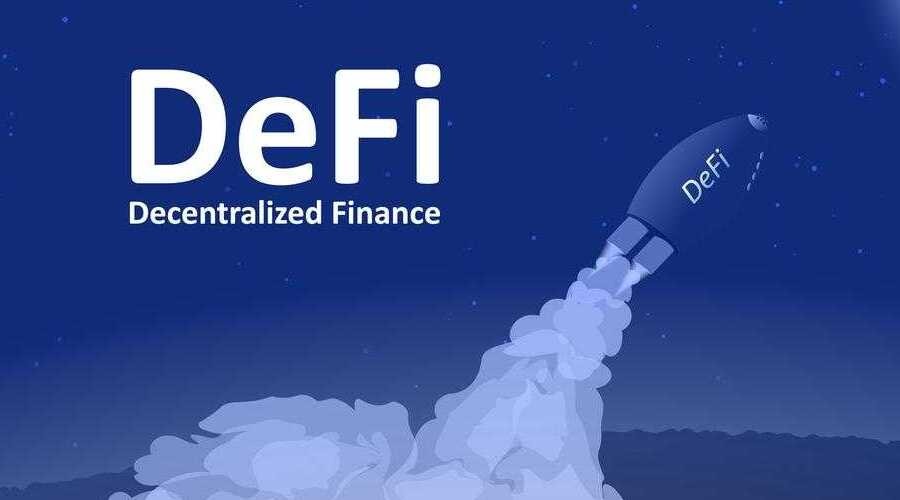
Cryptocurrencies and blockchain technology have revolutionized the financial landscape by introducing decentralized finance (DeFi) solutions. Among the many innovations in the DeFi space, Uniswap has emerged as a leading decentralized exchange (DEX) platform. In this article, we will explore the synergy between Uniswap and DeFi lending, highlighting the benefits, risks, and best practices associated with utilizing these powerful tools in the crypto ecosystem.
Introduction
As the popularity of cryptocurrencies soared, traditional financial systems faced challenges in meeting the demands of the crypto community. Uniswap emerged as a decentralized exchange protocol built on the Ethereum blockchain, enabling users to trade ERC-20 tokens directly from their wallets. Simultaneously, DeFi lending gained traction, offering crypto holders the opportunity to earn interest by lending their digital assets. Combining the strengths of Uniswap and DeFi lending presents a compelling synergy that can reshape the future of finance.
What is Uniswap?
Uniswap is a decentralized exchange that utilizes an automated market-making (AMM) mechanism. Unlike traditional exchanges that rely on order books, Uniswap relies on liquidity pools, which are pools of tokens locked in smart contracts. Users can trade tokens directly from these pools, eliminating the need for intermediaries. Uniswap’s unique design provides users with easy access to a wide range of tokens and enables seamless token swaps.
The Synergy between Uniswap and DeFi Lending
The combination of Uniswap and DeFi lending offers a powerful synergy that benefits both liquidity providers and borrowers. Liquidity providers can lock their assets into Uniswap’s liquidity pools, earning fees from token swaps while simultaneously staking their assets as collateral for lending platforms. Borrowers, on the other hand, can access liquidity directly from these pools and leverage their borrowed assets for various purposes.
Definition of DeFi lending
DeFi lending, also known as decentralized finance lending, is a practice within the crypto space that enables individuals to lend and borrow digital assets on decentralized platforms using smart contracts. Unlike traditional lending, which relies on intermediaries such as banks or financial institutions, DeFi lending operates on a peer-to-peer basis, allowing participants to interact directly with lending protocols.
In DeFi lending, borrowers can leverage their crypto assets as collateral to secure loans, while lenders provide liquidity by depositing their assets into lending pools. Smart contracts govern the lending process, automating loan origination, interest calculations, and collateral management. Interest rates are determined by the supply and demand dynamics within the lending platform, often influenced by factors such as utilization rates and market conditions.
Importance of DeFi lending in the crypto space
- Increased Access to Capital: DeFi lending opens up new opportunities for individuals to access capital. Traditional financial systems often have strict requirements and barriers that limit access to loans. DeFi lending, on the other hand, allows borrowers to leverage their crypto assets as collateral, unlocking liquidity without the need for credit checks or extensive paperwork.
- Higher Returns on Investments: For lenders, DeFi lending offers the potential for higher returns compared to traditional savings accounts or other investment options. By providing liquidity to borrowers, lenders earn interest on their deposited assets. The decentralized nature of DeFi lending eliminates intermediaries, enabling lenders to benefit from more significant interest rates due to reduced operational costs.
- Decentralization and Financial Inclusion: DeFi lending embodies the principles of decentralization, democratizing access to financial services. It enables anyone with an internet connection to participate in lending and borrowing activities, regardless of their geographical location or financial background. This inclusivity empowers individuals who may have been excluded from traditional financial systems, fostering financial independence and economic growth.
- Automation and Efficiency: Through the use of smart contracts, DeFi lending platforms automate the lending process, significantly improving efficiency. Borrowers can receive loans quickly, and lenders can earn interest without the need for manual intervention or lengthy approval processes. The automated nature of DeFi lending eliminates human error and streamlines operations, reducing costs and enhancing the overall user experience.
- Reduced Counterparty Risk: Traditional lending involves counterparty risk, as borrowers rely on centralized institutions to fulfill their obligations. In DeFi lending, the use of smart contracts mitigates this risk by ensuring that loans are collateralized, reducing the likelihood of default. Additionally, the transparent and auditable nature of blockchain technology enhances trust among participants, further minimizing counterparty risk.
The synergy between Uniswap and DeFi lending
The integration of Uniswap with DeFi lending platforms creates a mutually beneficial relationship, enhancing the functionality and efficiency of both ecosystems.
Uniswap as a liquidity provider for DeFi lending protocols
Uniswap serves as a reliable liquidity provider for DeFi lending platforms by enabling seamless token swaps. It allows users to obtain the required assets for borrowing or lending without relying on external liquidity sources. This integration significantly reduces the time and cost associated with acquiring the necessary tokens.
Benefits of integrating Uniswap with DeFi lending
The synergy between Uniswap and DeFi lending presents several advantages for users:
- Enhanced liquidity and trading efficiency: By leveraging Uniswap’s liquidity pools, DeFi lending platforms can provide borrowers with instant access to a wide range of assets. This enhances the overall liquidity of the lending protocols, making it easier for borrowers to obtain loans and lenders to find suitable lending opportunities.
- Lower slippage and reduced trading costs: Uniswap’s AMM model ensures that trades can be executed without significant price slippage. This reduces the trading costs for users compared to traditional exchanges with order books, where large orders can impact the market price.
- Access to a wide range of assets: Uniswap supports a vast array of ERC-20 tokens, offering borrowers and lenders a diverse selection of assets to engage with. This widens the opportunities for users to participate in lending activities and diversify their portfolios.
Challenges and limitations
While the integration of Uniswap and DeFi lending presents numerous advantages, there are also challenges and limitations to consider.
One potential challenge is the risk associated with using decentralized platforms. Smart contract vulnerabilities and security breaches pose risks to users’ funds. Additionally, the regulatory landscape for DeFi is still evolving, and compliance requirements may vary across jurisdictions. Users should exercise caution and conduct due diligence before engaging in DeFi lending activities.
Furthermore, market volatility can affect both Uniswap and DeFi lending platforms. Sudden price fluctuations may impact the value of collateral or the repayment capacity of borrowers, leading to potential risks for lenders. It is important for users to be aware of the market conditions and manage their risks effectively.
Best Practices for DeFi Lending

To navigate the world of DeFi lending successfully, it is essential to follow best practices:
Conduct Thorough Research
Before engaging in DeFi lending, conduct thorough research on the platforms, protocols, and projects involved. Understand their mechanisms, security measures, and reputation within the community. Stay informed about the latest developments and news in the DeFi space to make informed decisions.
Diversify Investments
Diversification is key to managing risk. Avoid putting all your assets into a single lending platform or protocol. Instead, diversify your investments across different platforms to minimize exposure to any single point of failure.
Understand the Risks and Terms
Carefully review and understand the risks and terms associated with each lending platform. Pay attention to interest rates, collateral requirements, loan durations, and potential fees. Assess the risks and rewards before committing your assets.
Choose Reliable Platforms
Select reputable and audited platforms for DeFi lending. Look for platforms with a strong track record, active community engagement, and transparent operations. User reviews and feedback can provide valuable insights into the platform’s reliability.
Future prospects and innovations in Uniswap and DeFi lending
Uniswap and DeFi lending continue to evolve and innovate, promising exciting developments for the future. Some potential advancements include:
- Enhanced user experience through improved user interfaces and intuitive designs.
- Integration with other DeFi protocols to expand the range of services and functionalities available.
- Development of layer-two solutions to address scalability and reduce transaction costs.
- Introduction of new lending models and mechanisms to optimize returns and mitigate risks.
As the DeFi ecosystem grows, Uniswap and DeFi lending are expected to play increasingly significant roles, providing users with more opportunities to participate in decentralized finance.
Conclusion
DeFi lending plays a pivotal role in the crypto space, offering numerous benefits such as increased access to capital, higher returns on investments, decentralization, automation, and reduced counterparty risk. However, it is important to be mindful of the potential risks and challenges, such as smart contract vulnerabilities, market volatility, and regulatory uncertainty. By adhering to best practices, conducting thorough research, and adopting risk management strategies, individuals can leverage the power of DeFi lending to enhance their financial opportunities in the crypto ecosystem.
FAQs
Is Uniswap safe to use for DeFi lending?
While Uniswap is generally considered safe, users should exercise caution and conduct due diligence. Smart contract vulnerabilities and security risks exist in the decentralized finance space, so it’s important to understand the risks and use reputable platforms.
Can I use any token for DeFi lending on Uniswap?
Uniswap supports ERC-20 tokens, which cover a wide range of cryptocurrencies built on the Ethereum blockchain. However, not all tokens may be available for lending on specific DeFi lending platforms. It’s important to check the supported assets on the respective lending platform.
How does Uniswap ensure liquidity for DeFi lending?
Uniswap utilizes liquidity pools contributed by users. When a user borrows or lends on a DeFi lending platform, Uniswap’s liquidity pools provide the necessary tokens for the transaction, ensuring instant liquidity.
What are the benefits of using Uniswap for DeFi lending?
Using Uniswap for DeFi lending provides enhanced liquidity, reduced trading costs, and access to a diverse range of assets. Uniswap’s automated token swap mechanism ensures efficient trades and minimizes slippage.
What is the future outlook for Uniswap and DeFi lending?
The future of Uniswap and DeFi lending is promising. Continued innovation, improved user experiences, and integration with other DeFi protocols are expected to drive growth and expand the possibilities within the decentralized finance ecosystem.